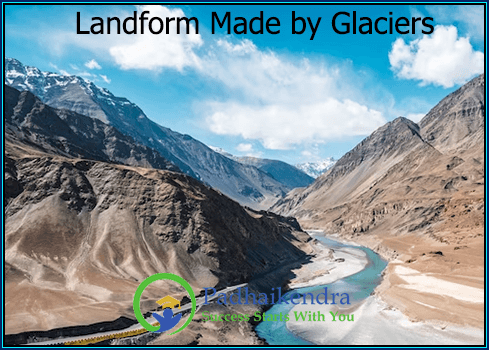Glaciers are large masses of ice that slowly flow over land, carving out valleys and creating unique landforms. The movement of glaciers can shape the landscape in a process known as glaciation. Glaciers are capable of eroding the land, carrying away material, and depositing it elsewhere. As a result, the landforms created by glaciers are both erosional and depositional.
Here are some landforms made by glaciers:
- U-shaped valleys: As a glacier moves down a valley, it erodes the sides and bottom of the valley, creating a U-shaped valley. U-shaped valleys have steep sides and a flat bottom and are often found in mountainous regions.
- Cirques: A cirque is a bowl-shaped depression at the head of a valley that has been eroded by a glacier. Cirques are often found at high elevations and can be several hundred meters deep.
- Arete: An arete is a narrow, sharp ridge that separates two cirques. The arete is formed by the erosive action of glaciers on both sides.
- Horns: A horn is a peak that has been shaped by glaciation on three or more sides. Horns are formed when several cirques erode into the same mountain peak.
- Moraines: A moraine is a mound or ridge of rock and sediment that is deposited by a glacier. There are two main types of moraines: lateral moraines, which form along the sides of a glacier, and medial moraines, which form when two glaciers merge.
- Drumlins: A drumlin is an elongated hill that is formed by the deposition of glacial till. Drumlins are usually found in groups and can be several kilometers long.
- Eskers: An esker is a long, winding ridge of sediment that was deposited by a subglacial stream. Eskers can be several hundred kilometers long and are often found in areas that were once covered by ice sheets.
- Kettles: A kettle is a depression in the ground that is formed when a block of ice is left behind by a retreating glacier. When the ice melts, it leaves behind a hole or depression in the ground.
These are just a few examples of the many landforms created by glaciers. Glaciers have had a significant impact on shaping the earth’s surface, and their influence can still be seen today.





